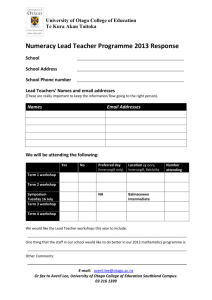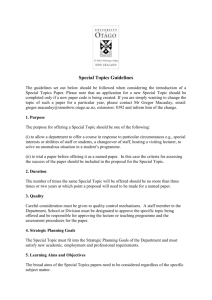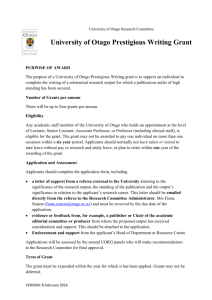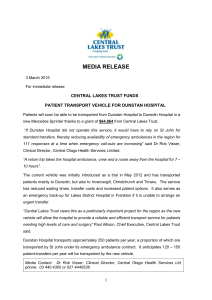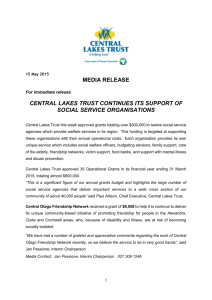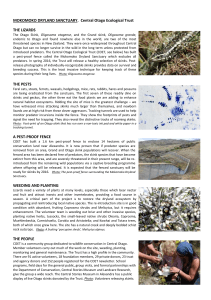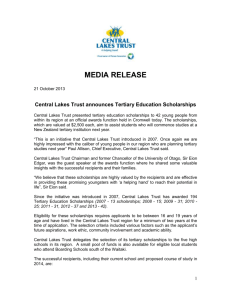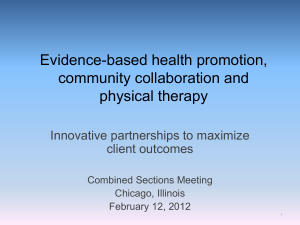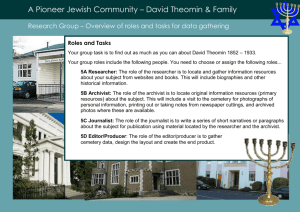Training Physical Therapists in Evidence
advertisement
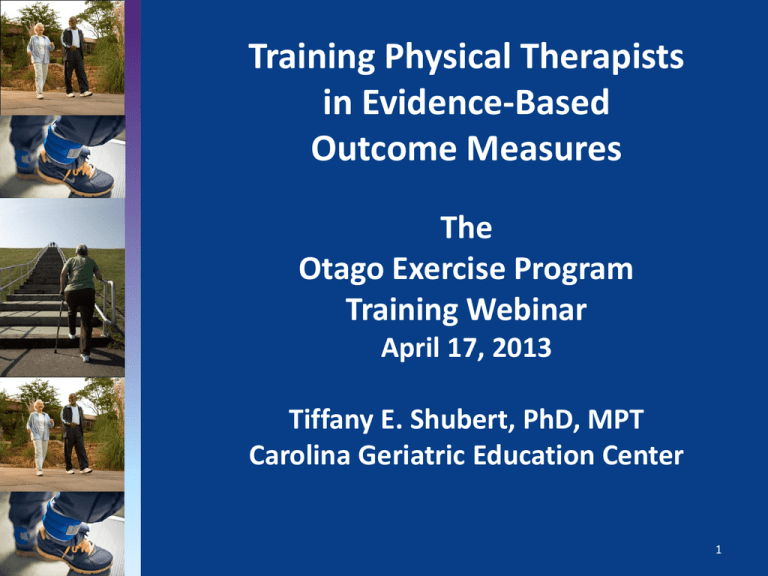
Training Physical Therapists in Evidence-Based Outcome Measures The Otago Exercise Program Training Webinar April 17, 2013 Tiffany E. Shubert, PhD, MPT Carolina Geriatric Education Center 1 Acknowledgements • Carolina Geriatric Education Consortium – Content – Webinar Platform • Eastern Area Health Education Center – Contact Hours – Archived webinar 2 What we want to understand about the Otago Exercise Program • The research & rollout in the US • How to implement • Discuss evidence-based protocols for outcome measures • How to use the database to track patient outcomes 3 US Implementation 1. CDC identifies Otago as an evidence-based fall prevention program 1. CDC Pilots in CO, NY, OR 2. Online training program 3. CDC Partners, Policies, and Programs for Fall Prevention 4. Evaluation of implementation 4 Otago – True or False? • You must start Otago on Day 1 • You have to prescribe all 17 exercises on Day 1 • You need to modify the exercises for your patient • Your patient will not succeed if you see them so infrequently • But my exercises are better than Otago… 5 Myths of Standardization & Variation 6 Otago – In a nutshell • Evidence-based fall prevention program from New Zealand • 6 – 8 visits over a year • Standard set of balance and strength exercises • Best for community-dwelling but frail • Patient does exercises INDEPENDENTLY • Progressed by physical therapist • 30-40% reduction in falls in high risk fallers • Can it work in the United States? 7 Before You Start • Is the patient ready? • Is the patient compliant? • Do we start on day 1??? 8 Before You Start • Is the therapist ready? • Is the therapist compliant? • Is the therapist proficient in the outcome measures? • Has the therapist registered with the database? • Has the therapist registered the patient with the database? 9 Quick Review – Outcome Measures • • • • Timed Up and Go 30-second Chair Rise Standing balance sequence Walking speed* – Walking speed is optional, only input if your agency already collects the data http://www.cdc.gov/homeandrecreationalsafety/Fal ls/steadi/videos.html#TUG 10 Let’s go! • Register your patient (anytime before start) • Enter baseline info (Otago Day 1) • Follow up info @ 8 weeks & 6 months • Discharge when appropriate 11 Otago Visit 1 • What info is collected? • What happens? • When is next visit? 12 Otago Visits PT Management Phase Month Week 1 1 2 Initial Visit Self- Management Phase 2 3 3 4 6 8 Visit Visit* Visit 7 8 9 5 6 Visit Call Month 4 10 Call Call 11 12 Week Visit Visit Call Call Call 13 Visit 4 and After • • • • Visit 4 – Outcome measures Phone calls Visits 5, 6, 7 (Months 6, 9 , 12) Final Otago Visit/Discharge: – Discharge at 12-Month point or WHEN APPROPRIATE – When to discharge: • Patient no longer challenged by Otago OR • Patient mastered exercises and independently exercising 6 days per week OR • Patient met goals • Resources and Reminders 14 Reminders and Resources • • • • Phone calls Email reminders Where to go if you have questions www.Phconnect.org 15 How am I doing? • You (or your agency) can request – Average number of visits – Improvements in outcome measures – Fall history 16 Summary • Provide your email to access the database • You will receive an email inviting you to join • For each patient – Enter into the database – Complete Patient Information and Baseline Survey tabs within 5 days of starting Otago – Receive e-mail reminders for 3-Month 6-Month Follow-Up visits – Complete Discharge Survey when patient is discharged from Otago (can be done at ANY time) 17 Questions? • otago@unc.edu • Phconnect.org • 919-360-1970 if you get really stuck! 18 Appendix • Screen shots to demonstrate database use 19 OTAGO EXERCISE PROGRAM: Outcome Measures Database Form Completion • Navigation • Instructions to Therapist 20 21 22 23 24
